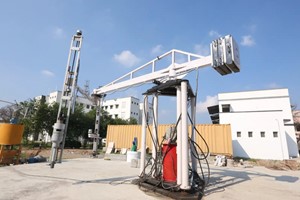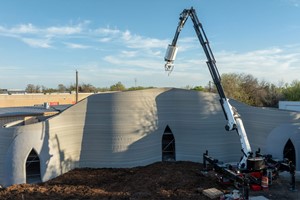The construction industry is evolving with the integration of robotics, especially in prefabricated construction. Prefabrication, which involves manufacturing building components off-site in a controlled environment and later assembling them on-site, is increasingly popular due to its efficiency, precision, and cost-effectiveness. Robotics enhances these benefits, improving production, transportation, and assembly while reducing environmental impact. This article explores the technical integration, advantages, challenges, and impact of robotics in prefabricated construction.
Technical Integration
Robotics is incorporated into various stages of the prefabrication process, automating tasks from manufacturing to on-site assembly. These systems rely on digital models, such as Computer-Aided Design (CAD) and Building Information Modeling (BIM), for precise instructions. These models are translated into programming data, allowing robots to fabricate components with minimal human involvement while maintaining high accuracy.
Robotic Manufacturing
Robots play a key role in optimizing production:
- 3D Printing: Robotic arms equipped with nozzles build components layer by layer using materials like concrete or polymers, allowing for complex designs and custom geometries.
- Precision Cutting and Shaping: CNC machines and laser cutters perform precise cutting, drilling, and shaping, ensuring components fit seamlessly during assembly.
Material Handling and Transportation
Robots handle material tasks efficiently and safely:
- Gantry Robots: Moving along X, Y, and Z axes, these robots transport and position heavy materials for repetitive tasks.
- Articulated Robots: Multi-axis robotic arms perform complex tasks like lifting, welding, screwing, and joining with high precision. Autonomous vehicles such as self-driving trucks or drones are also used to transport prefabricated components to the construction site, guided by GPS and sensors for safe delivery.
On-site Assembly
Upon arrival at the site, robots assist in the precise assembly of prefabricated components. Automated arms position and secure elements, and can also weld or bolt large structural parts, ensuring accuracy and speeding up project timelines.
Advantages
Robotics in prefabricated construction brings several key benefits:
- High-Throughput Production: Robotic systems enable continuous, high-speed production in assembly-line environments, significantly reducing project timelines.
- Precision Engineering: Robots achieve tolerances in cutting, welding, and assembling that are hard to replicate manually, resulting in higher-quality components and fewer on-site errors.
- Automation of Complex Tasks: Articulated robots handle intricate tasks such as welding and drilling, adapting to project-specific needs for greater flexibility.
- Enhanced Safety: Robotics reduces human involvement in dangerous tasks, improving worker safety by delegating hazardous operations to machines.
- Sustainability: Robots optimize material usage, reducing waste and supporting sustainability efforts. Their precision allows them to work with eco-friendly materials, further minimizing environmental impact.
- Cost and Labor Optimization: Although the initial cost of robotics is high, the long-term savings in labor and reduced rework make it a cost-effective investment.
Challenges
Despite the benefits, several challenges hinder the widespread adoption of robotics in prefabrication:
- High Capital and Maintenance Costs: The initial investment in robotic systems, including procurement and installation, is substantial. Regular maintenance and downtime management also require dedicated resources.
- Workforce Shortages: The industry faces a shortage of skilled technicians and engineers who can program, maintain, and troubleshoot robotic systems. Investing in workforce training is essential to overcome this barrier.
- Integration with Legacy Systems: Many construction companies still use traditional methods, making it difficult to integrate robotics with legacy systems. Interoperability and data exchange standards are necessary to ensure smooth integration.
- Customization Limitations: While robotics excels in repetitive tasks, handling highly customized or non-standard designs can be challenging. Reprogramming robots for unique projects can cause delays, requiring adaptable automation systems.
- Regulatory Compliance: The introduction of robotics complicates compliance with safety regulations and building codes. AI-driven safety protocols are being developed, but regulatory approval remains a challenge.
Robotics in prefabricated construction is driving significant changes in the industry. While the technology presents numerous advantages, including improved precision, safety, and cost-efficiency, the challenges of high capital investment, workforce shortages, and regulatory hurdles must be addressed for broader adoption.
By Panchami Pandharikar














